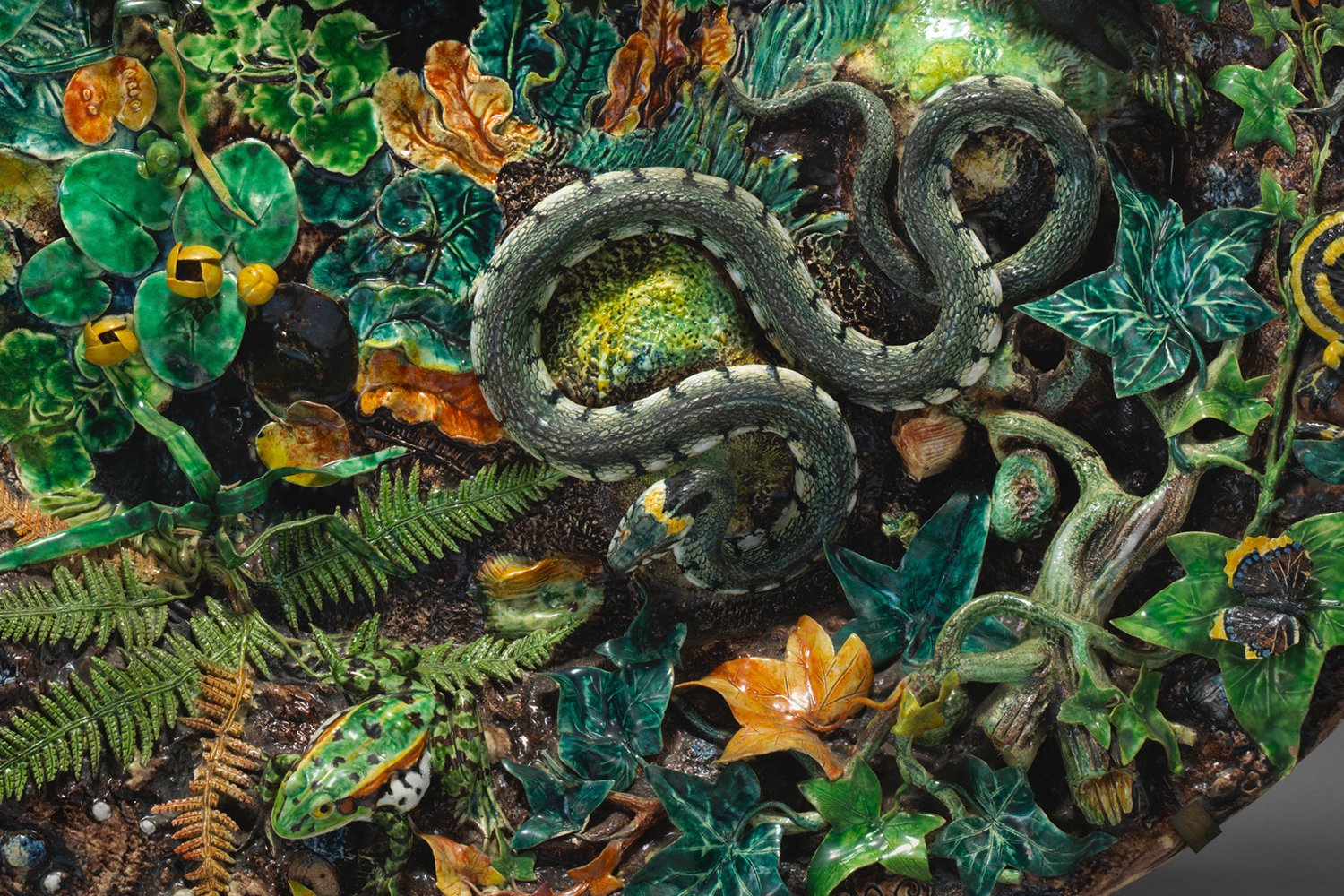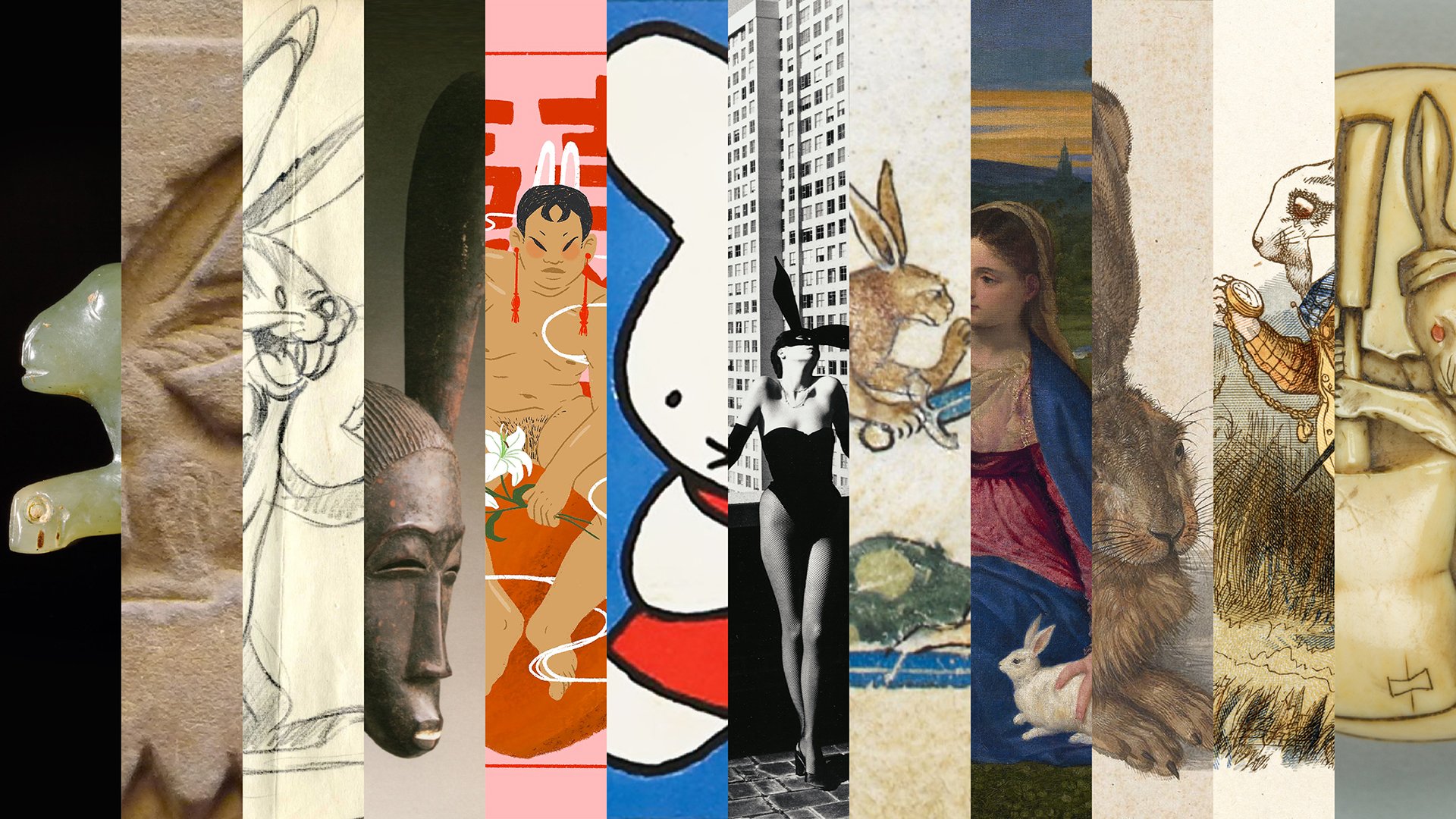From Folklore to Fine Art: An Anthology of the Snake

Tracing the symbolism of the serpent across time and space.
Cover photo: Detail of Large Basin with Snake, Ferns, and Bark, glazed earthenware, by Charles-Jean Avisseau (circa 1850-55). Via the Metropolitan Museum of Art (color-corrected and cropped).
Intro
2025 is expected to be a great year of transformation as it is the year of the snake according to the ancient Chinese zodiac. While the snake, or serpent, has a rather poor reputation in the “West,” it is considered a symbol of wisdom and regeneration across much of the world.
The snake was the sixth of twelve animals to finish in a race for the mythical Jade Emperor. According to Chinese astrology, the year (both birth and current) determines one’s personality and luck. People born during the year of the snake are said to be intuitive, mysterious, and seductive, but also prone to laziness and suspicion. These years include 1917, 1929, 1941, 1953, 1965, 1977, 1989, 2001, 2013, and 2025.
With a variety of depictions and associations around the globe, the snake has a long, winding history; let’s take a closer look at this polarizing creature.
Nature
Snakes are one of the most common animals on earth, found on every continent except Antarctica. Over 3,000 species have been discovered, including cobras, pythons, and vipers. Snakes are limbless reptiles which eat their food whole and shed their skin; most lay eggs and a minority are venomous. They are cold-blooded, reliant on their external environment for thermoregulation.
Snakes are kept as pets, eaten, infused in alcohol, and harvested for their scaled skin. Snake charming — provoking serpents to dance with music — was popular in India until the practice was formally outlawed as animal abuse in 1991.
Snake oil is a traditional Chinese remedy for inflammation. After it was imported to the United States, a fraudulent substitute was developed by Clark Stanley, a dubious snake oil salesman. Hence why “snake oil” is synonymous with scams and con-men! Snakes are still used in medicinal and cosmetics research, as well as illicit recreational drugs.
Art
Snakes captivate human imagination like no other animal. The reptile has inspired countless monsters, including sea serpents, basilisks, and dragons — such as the Babylonian Mushhushshu (“Furious Serpent”) and other deities.
American writer Joseph Campbell observed, “the serpent carries in itself the sense of both the fascination and the terror of life.” Photographer Mark Laita says, “Their beauty heightens the danger. The danger amplifies their beauty.”
From an artistic perspective, snakes have a simple, flexible shape that is easy to render and recognize across a variety of mediums. The texture of their scaled skin is especially attractive. Serpents were a major source of inspiration for artists René Lalique, Joan Miró, and Niki de Saint-Phalle. Snakes are also a popular motif at the Italian fashion house Bulgari, with designs dating to 1948.
Mythology & Religion
Ophidiophobia, or an aversion to snakes, is possibly one of mankind’s most primal fears. Swedish psychologist Arne Öhman explains, “Snakes have provided a recurrent threat throughout mammalian evolution.” Serpents spawned many of the greatest creatures in mythology, including Medusa, Jörmungandr, Nure-onna, Biscione, Leviathan, and Quetzalcoatl.
Various communities demonstrated forms of snake worship, often associated with wisdom, protection, and rain. One of the earliest known examples is the Minoan Snake Goddess of Crete, dating to 1600 BC, though her role is unclear.
In Ancient Egypt, the pharaoh wore a rearing cobra called an uraeus, representing the divine authority of the goddess Wadjet. Across much of Asia, the serpentine Naga is a guardian of the Dharma, Buddhist teaching; the Naga was declared Thailand’s national symbol in 2022.
In Kurdish mythology, the snake-woman Shahmaran sacrificed her life for a lover. The Tupi-Guaraní people in Brazil recognize Boitatá, a “Fire Snake” that defends the forests. The Guna people in Panama once chanted Ukkunaipe ikar, or “The Way of the Rattlesnakes,” for protection from snakebites.
The Baga people in West Africa celebrated the serpent spirit Ninkinanka with snake headdresses called a-Mantsho-ña-Tshol, the Hopi Tribe in Arizona practiced snake dances, and Aboriginal people in Australia believe in the Rainbow Serpent, a powerful creator deity.
Symbolism
The snake has a variety of connotations across cultures. “It’s a symbol of both good and evil, life and death, danger and healing,” concludes Erica Wright, author of the 2020 book Snake.
The caduceus — a staff with two intertwined snakes — dates back to the ancient Sumerians, associated with Ningishzida, a deity of vegetation and war. It was later connected to Hermes as a symbol of peace. The caduceus was eventually confused with the Rod of Asclepius, Greek god of medicine, and adopted by the US Army Medical Department in 1902. The association persists today.
The snake is also famous as the ouroboros (“tail eater”), a symbol of eternity and endless renewal dating back to Ancient Egypt. It was especially popular among Renaissance alchemists. In the words of German philosopher Friedrich Nietzsche, “The serpent that cannot shed its skin perishes.”
In 37 BC, the Roman poet Virgil coined the phrase “latet anguis in herba” (“snake in the grass”) referring to a hidden threat. In Aesop’s fable, The Farmer and the Snake, the revived serpent kills its human savior. Snakes also represent villains in the tale of Saint Patrick and on the Mexican coat of arms — both tied to Christianity.
Sex
Due to their long, elastic shape, serpents have long been associated with virility and fertility. In fact, psychoanalyst Sigmund Freud called the snake “the most important” phallic symbol.
Snake-infused alcohol is popular throughout Asia — such as Okinawa’s habushu — said to enhance male vitality, and snake tattoos in the American Traditional style symbolize masculine power.
In Chinese folklore, the Legend of the White Snake follows the trials of love between the mortal man Xu Xian and the snake spirit Bai Suzhen. Originally portrayed as a demonic seductress, Xu Xian is now considered a model of loyalty. In 1958, the popular story was produced by Toei Studios as Japan’s first full-length color animation.
Many Western interpretations of snakes are influenced by Christianity. According to the Bible, it is a serpent who tempts the primordial couple Adam and Eve to eat forbidden fruit and to be consequently expelled from paradise.
Mixed connotations of phallic energy and seduction are visible in both Wangechi Mutu’s Yo Mama and David Hockney’s Jungle Boy. Mutu depicts Nigerian feminist Funmilayo Anikulapo-Kuti mutilating a devilish serpent, while Hockney employs the snake as a representation of homosexual desire.
The temptation of Adam and Eve was also referenced at the 2001 MTV Video Music Awards, where pop star Britney Spears performed I’m a Slave 4 U with a live albino Burmese python. Remembered as “one of the greatest live performances in music history,” the show presented the 19 year old as an exotic seductress, cementing her status as a young sex symbol.
Pop Culture
In Western pop culture, the snake is often an object of terror. Fictional archaeologist Indiana Jones is famously afraid of snakes. Snakes star in numerous horror films such as Anaconda (1997) and Snakes on a Plane (2006). The serpent is a recurring motif in the Harry Potter series, associated with Voldemort, an evil wizard obsessed with immortality.
Snakes also have a noteworthy history in gaming, relating to the ancient Indian board game now known as Snakes and Ladders, the gambling term “snake eyes” (denoting the worst-possible dice roll), and the classic video game Snake — designed by Finnish engineer Taneli Armanto in 1997.
Personally, my favorite snake depiction is the “Incredibly Deadly Viper” from Lemony Snicket’s A Series of Unfortunate Events — “one of the least dangerous and most friendly creatures in the animal kingdom.”
Conclusion
Jesus called for his disciples to “be as wise as serpents and as innocent as doves” — marking a clear contrast between the two animals. I will never forget my own panic when a snake swam past me in a Texas lake. And, though the snake’s reputation may never be fully rehabilitated, it is a fascinating and beautiful creature.







![Untitled , photograph, by Ren Hang [任航] (2013). Via Begriff und Kritik.](https://images.squarespace-cdn.com/content/v1/5cb09473755be259f904d128/1733929165338-AOC3O8CJSFUF36HR5NNM/Untitled+Ren+Hang.jpg)





















